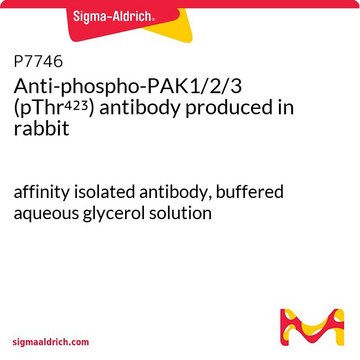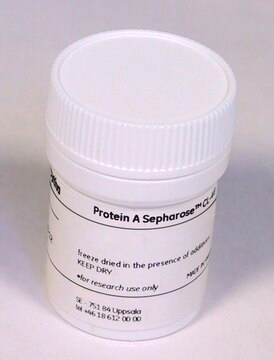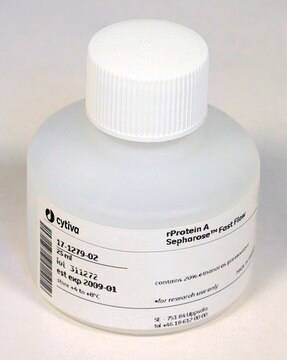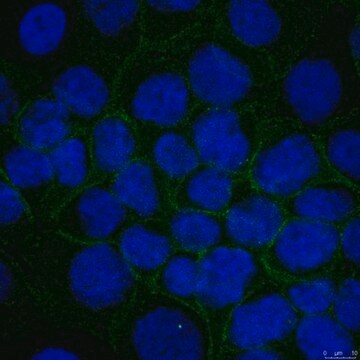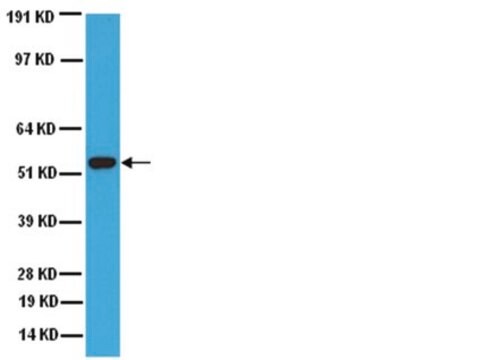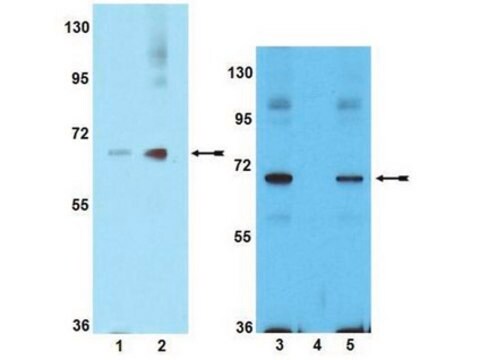Kluczowe dokumenty
P3237
Anti-phospho-PAK1 (pThr212) antibody, Mouse monoclonal
clone PK-18, purified from hybridoma cell culture
About This Item
Polecane produkty
pochodzenie biologiczne
mouse
Poziom jakości
białko sprzężone
unconjugated
forma przeciwciała
purified from hybridoma cell culture
rodzaj przeciwciała
primary antibodies
klon
PK-18, monoclonal
Postać
buffered aqueous solution
masa cząsteczkowa
antigen 68 kDa
reaktywność gatunkowa
human, mouse, rat
stężenie
~2 mg/mL
metody
immunocytochemistry: suitable
indirect ELISA: suitable
microarray: suitable
western blot: 0.2-0.4 μg/mL using a whole extract of transfected and activated COS-7 (monkey kidney) cells expressing phosphorylated PAK1
izotyp
IgG1
numer dostępu UniProt
Warunki transportu
dry ice
temp. przechowywania
−20°C
docelowa modyfikacja potranslacyjna
phosphorylation (pThr212)
informacje o genach
human ... PAK1(5058)
mouse ... Pak1(18479)
rat ... Pak1(29431)
Opis ogólny
Monoclonal Anti-Phospho-PAK1 (pThr212) reacts specifically with human PAK1 phosphorylated at Thr212 (68 kDa), and does not detect the unphosphorylated epitope.
Immunogen
Zastosowanie
- enzyme linked immunosorbent assay (ELISA)
- immunoblotting
- immunohistochemistry
Działania biochem./fizjol.
Postać fizyczna
Oświadczenie o zrzeczeniu się odpowiedzialności
Nie możesz znaleźć właściwego produktu?
Wypróbuj nasz Narzędzie selektora produktów.
Kod klasy składowania
10 - Combustible liquids
Klasa zagrożenia wodnego (WGK)
WGK 3
Temperatura zapłonu (°F)
Not applicable
Temperatura zapłonu (°C)
Not applicable
Certyfikaty analizy (CoA)
Poszukaj Certyfikaty analizy (CoA), wpisując numer partii/serii produktów. Numery serii i partii można znaleźć na etykiecie produktu po słowach „seria” lub „partia”.
Masz już ten produkt?
Dokumenty związane z niedawno zakupionymi produktami zostały zamieszczone w Bibliotece dokumentów.
Nasz zespół naukowców ma doświadczenie we wszystkich obszarach badań, w tym w naukach przyrodniczych, materiałoznawstwie, syntezie chemicznej, chromatografii, analityce i wielu innych dziedzinach.
Skontaktuj się z zespołem ds. pomocy technicznej